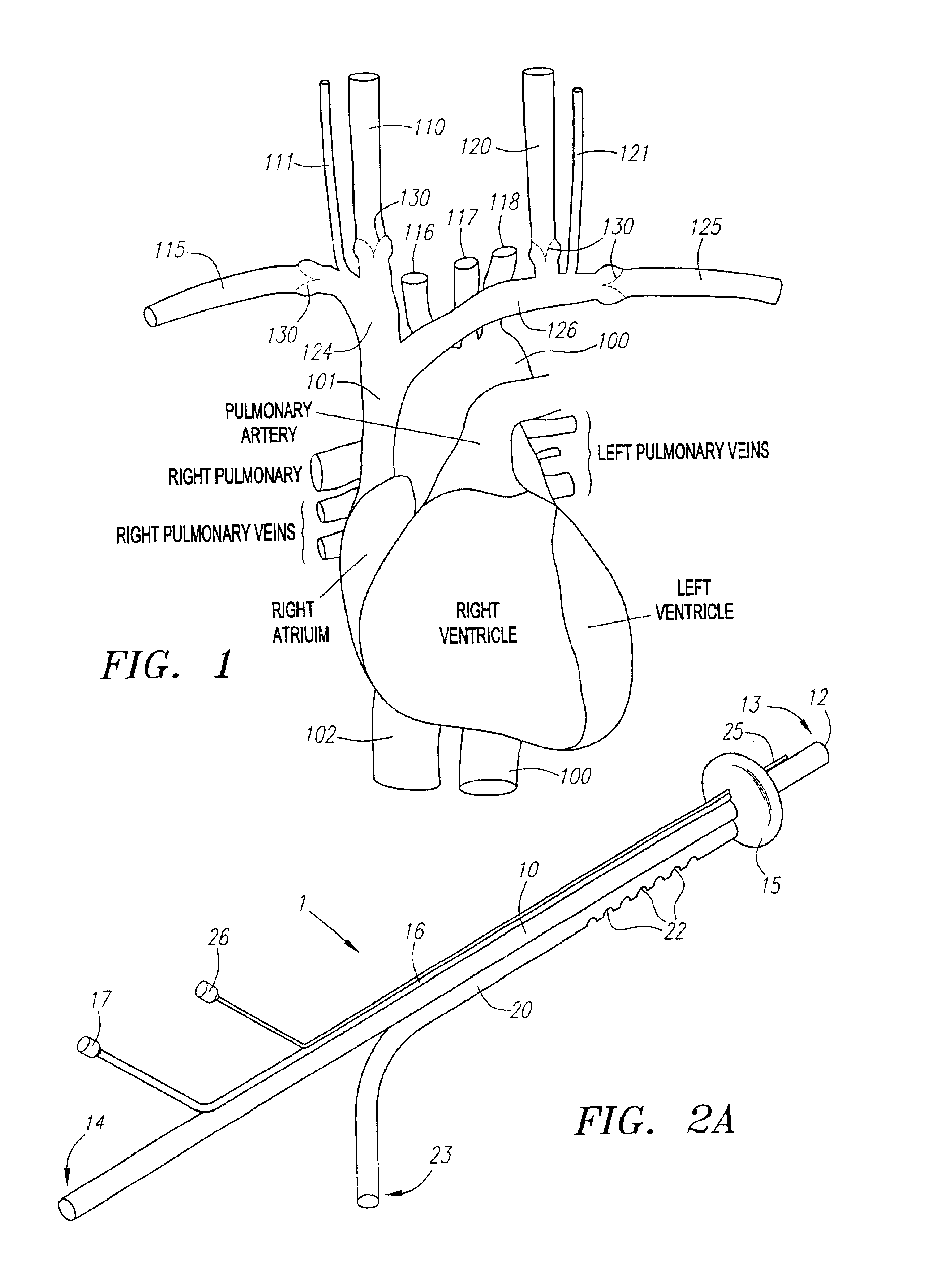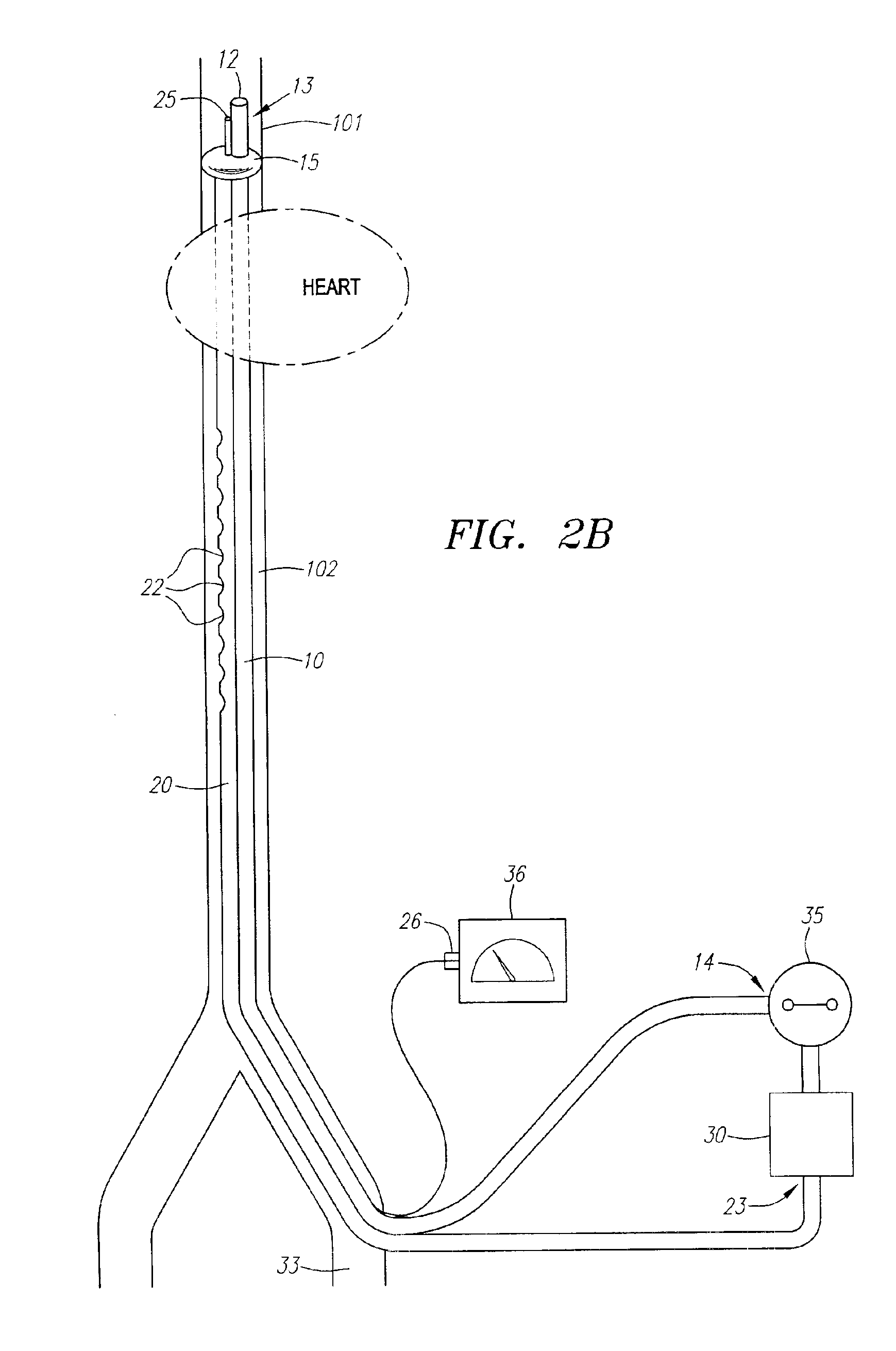Retrograde venous perfusion with isolation of cerebral circulation
a technology of retrograde veins and cerebral circulation, applied in the field of retrograde vein perfusion with isolation of cerebral circulation, can solve the problems of irreversible neurologic damage, patient at great risk, blood flow through the aorta often interrupted, etc., and achieve the effects of minimizing the damage to the ivc, reducing the infusion rate, and minimizing the backflow of blood
- Summary
- Abstract
- Description
- Claims
- Application Information
AI Technical Summary
Benefits of technology
Problems solved by technology
Method used
Image
Examples
Embodiment Construction
[0027]The cerebral venous system and the heart is depicted in FIG. 1. Arterial blood flow to the brain is normally supplied by aorta 100 which gives rise to right brachiocephalic trunk 116, left common carotid artery 117, and left subcalvian artery 118. Right internal jugular vein 110 and left internal jugular vein 120, usually the largest veins in the neck, drain blood from the brain and superficial parts of the face and neck. Right external jugular vein 111 and left external jugular vein 121 drain most of the scalp and face. Both the right external and internal jugular veins then drain into right brachiocephalic vein 124, and the left external and internal jugular veins drain into left brachiocephalic vein 126. The right brachiocephalic vein also receives drainage from right subclavian vein 115, and the left brachiocephalic vein receives drainage from left subclavian vein 125. The right and the left brachiocephalic veins drain into superior vena cava 101, which then empties into t...
PUM
 Login to View More
Login to View More Abstract
Description
Claims
Application Information
 Login to View More
Login to View More - R&D
- Intellectual Property
- Life Sciences
- Materials
- Tech Scout
- Unparalleled Data Quality
- Higher Quality Content
- 60% Fewer Hallucinations
Browse by: Latest US Patents, China's latest patents, Technical Efficacy Thesaurus, Application Domain, Technology Topic, Popular Technical Reports.
© 2025 PatSnap. All rights reserved.Legal|Privacy policy|Modern Slavery Act Transparency Statement|Sitemap|About US| Contact US: help@patsnap.com



